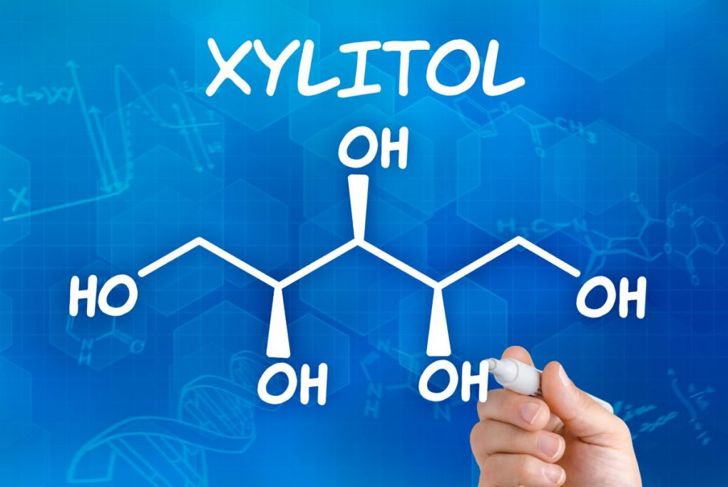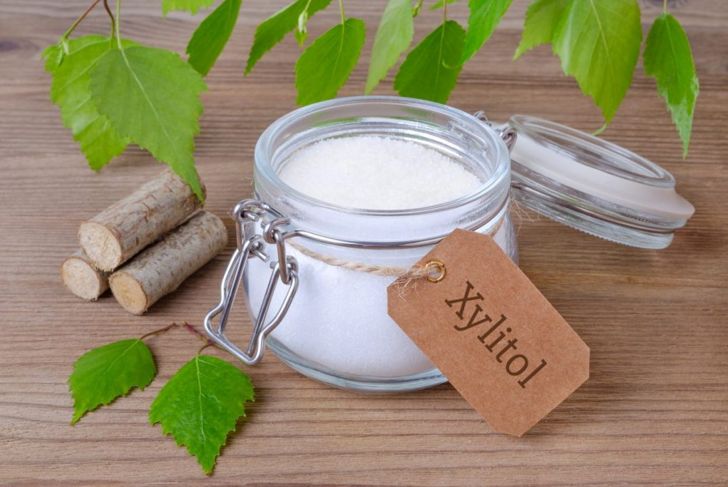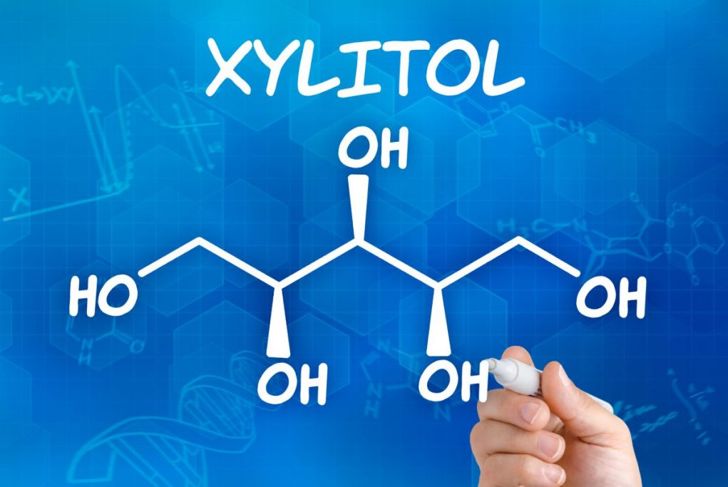In the search for alternatives to refined sugar, many people are turning to xylitol to satisfy their longing for something sweet. This sweetener touts a 40-percent lighter caloric load compared to table sugar and a lower glycemic index. The crystalline substance has the same look and just about the same level of sweetness as sugar with little or no aftertaste, making it an immensely popular food additive. Xylitol is shown to be effective in oral health and medical applications.
What Is Xylitol?
Xylitol is sugar alcohol whose derivative, xylose, naturally occurs in fruits and vegetables as well as within the human body. European scientists discovered the sweetener in the 1890s, and it became a staple in European nations as a result of wartime sugar shortages. The FDA approved xylitol for dietary use in the United States in 1963. Since the 1970s, the scientific community has recognized several health benefits of sugar replacement, facilitating its inclusion in many food and medical products. Xylitol is a non-nutritive food additive. It does not contain any vitamins or minerals. However, it does contain a small number of calories, carbohydrates, and other organic compounds.
How is Xylitol Produced?
Suppliers typically produce xylitol from biomass such as corn, wood, rice, or wheat. Corncobs and birch wood provide the bulk of xylitol source material. Manufacturers extract the polysaccharide xylan from the raw materials, then hydrolyze the xylan into xylose. Next, producers convert the xylose into xylitol and remove impurities using conventional industrial standards.
Xylitol Benefits: Diabetes Management
Xylitol is an attractive flavor-enhancing option for individuals with diabetes and those who want to avoid blood sugar spikes. According to an American Diabetes Association study, the body cannot metabolize xylitol and skew the balance of glucose and insulin as sugar would. Xylitol’s glycemic index (GI) ranges from seven to 13 while table sugar’s GI is between 68 and 100. Government studies suggest that while xylitol intake contributes to a small increase in blood sugar, it does not exert the same impact on blood sugar levels as refined carbohydrates.
Xylitol Benefits: Ear and Sinus Health
Xylitol may inhibit the growth of bacteria that causes ear and nasal infections. The sugar replacement appears to keep Streptococcus pneumoniae from attaching to tissue and building colonies. Thus, xylitol boosts the efficacy of ear and nasal sinus infection treatments such as nasal irrigation. Clinical research has found that up to four in ten children who were given xylitol in gum or syrup experienced fewer middle ear infections.
Xylitol Benefits: Dental Health
Who could have imagined a sweetener helping teeth? Xylitol finds overwhelming repute as a supporter of oral health. The sugar replacement fights Streptococcus Mutans, the bacteria that promotes cavities. A host of research indicates that the consistent use of xylitol can reduce the occurrence of dental caries by as much as 80 percent. Exposing cavities to the sweetener may reduce the sensitivity of decaying areas, too. An extensive study involving hundreds of children discovered extended dental benefits over five years after regular use of xylitol. Xylitol’s dental health benefits relate more to exposure than to dosage. Scientists recommend using xylitol oral hygiene products four to five times daily to starve the cariogenic bacteria in your mouth. Studies advise an intake of between six to ten grams of sweetener each day.
Xylitol Benefits: More Health Advantages
Xylitol demonstrates potent alkalizing properties that lower acidity in the mouth and throughout the body, helping boost bone density and immunity to bacterial infections. The sugar alternative also exhibits effects similar to dietary fiber in the digestive tract that reduces stagnation in the gut. Xylitol is a common ingredient in tube feeding supplements for its energy-enhancing abilities.
Xylitol Concerns: Purity
Pure xylitol does not normally contribute to gastrointestinal upset as much as other sugar alcohols. However, products that do not use pure xylitol may produce this effect. Some manufacturers add other sugar alcohols such as sorbitol or mannitol to reduce the cost of xylitol, which is rather expensive to formulate. These other fillers tend to cause more digestive issues. Further, acids decrease the effectiveness of xylitol. To avoid this dilemma, seek high-grade xylitol products and steer away from items that include acids.
Xylitol Concerns: Hydrogenation
Most xylitol manufacturers produce the food additive by hydrogenation, a process that treats xylose with hydrogen and a catalyst, typically nickel. Hydrogenated foods contribute to behavioral issues, cancer, and Alzheimer’s disease. Nickel is a toxin that research has linked to asthma attacks, kidney problems, indigestion, lung disorders, and skin allergies. While studies have not found a direct correlation between xylitol and these conditions, the hydrogenation process is worthy of consideration when choosing this sugar alternative.
Xylitol Concerns: Toxicity to Dogs
Xylitol is extremely dangerous for dogs. A minute amount may prove lethal — as little as a few sticks of xylitol-sweetened chewing gum. Dogs absorb the sugar alcohol into their bloodstream quickly, which can trigger a massive insulin release. This insulin rush may lead to hypoglycemia, a profound decrease in blood glucose levels that can happen in less than an hour and is life-threatening if left untreated. Xylitol also contributes to fatal liver disease and seizures in dogs.
How to Use Xylitol
People consume xylitol as a sugar replacement, to enhance oral health, and to keep nasal passages clear. You can cook and bake with it, replacing sugar with an equal amount of the alternative. Look for xylitol in prepared foods, drinks, and candies on your grocery shelf. You will also find xylitol in toothpaste, dental rinses, and chewing gums. Introduce xylitol to your diet slowly and note your body’s reaction to it. Some people experience minor digestive disturbances, but these issues usually resolve on their own. Pregnant women and individuals with gastrointestinal issues may want to avoid products that contain xylitol.

 Home
Home Health
Health Diet & Nutrition
Diet & Nutrition Living Well
Living Well More
More




















